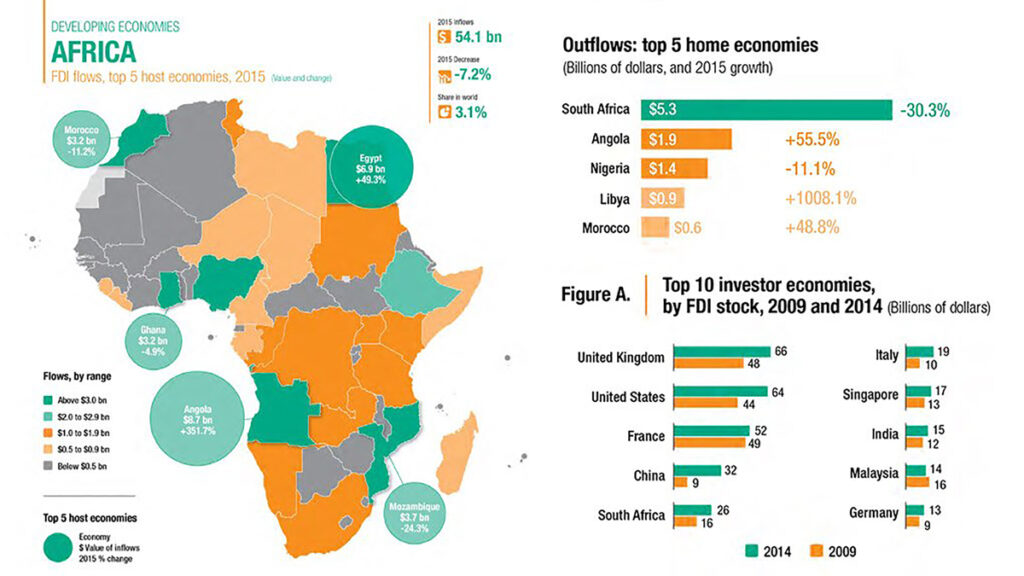Catalysing SA Inc as a supply chain
Catalysing SA Inc as a supply chain
South Africa needs to catalyse its supply chain, and DEVLYN NAIDOO explains how this can happen.
South Africa enjoys a sui generis (“of its/their own kind”, or “in a class by itself”, and therefore “unique”) geographical location. Our location presents entry and exit access points that extend support to international trade flows across all the modalities in our supply chain. These access points are enabled through the provisions of Section 6(1)(a) to (f) of the Customs and Excise Act 91 of 1964.
SA Inc has appointed 10 air modality entries and exits in the form of commercial airports, 19 land border posts to serve the land modality, and seven commercial seaports to serve the sea modality.
South Africa’s unique placement, coupled with a relatively developed road network, historically allowed us to be considered as one of the gateways to and from a largely landlocked Africa. Business and government must collectively harness this advantageous disposition through the catalysation of SA Inc as a supply chain.
As a country, we can no longer just rely on geographical position. Instead, we need to catalyse our supply chain by creating port and intermodal network infrastructure efficiencies across all modalities to ensure that we remain competitive in a consistently developing and increasingly competitive continent. The existence of our country as a functioning supply chain is under threat, and fixing it seems to be easier said than done. However, it is possible, and the observed commitment from government, public, and private sector stakeholders reminds us that there is a desire to keep South Africa on the international trade map.
So how does one catalyse SA Inc as a supply chain? While a detailed answer to this is too exhaustive to pen here, there are five high-level steps that can help to jump start this process.
First and foremost, we must institute and execute a workable private-public partnership model, whereby government and business support each other by working in alignment toward the common goal of improving the shared logistics network. Businesses invariably drive the economy, and this concept resonates in the words delivered by President Cyril Ramaphosa during his 2021 State of the Nation Address: “Government creates the conditions for businesses to function.” When we view SA Inc as a supply chain, we begin to integrate an interdisciplinary framework between government departments – for example, the Department of Transport (DoT) and the Department of Public Enterprises (DPE) – and community, business, and labour.

Secondly, as our counterpart and neighbouring countries on Africa’s west and east coasts continue to rapidly develop sea, road, rail, and air networks, as well as port infrastructure, we are faced with the prominent and ever-increasing reality of contending with competitive alternatives. While competition is healthy, we need to enhance our performance to remain competitive; to do that requires a shared responsibility with a shared infrastructure. To quote SAAFF CEO Juanita Maree, a passionate captain of industry and an advocate for SA Inc, “Government must adopt the concept of a National Logistics Crisis Committee; we need to adopt the philosophy of a shared responsibility, shared infrastructure, and shared maintenance.”
Thirdly, we need to focus our attention on coordinated inter-departmental support, so that the DoT, as an example, can deliver on its mandate with aligned support from the DPE. Each link in the value chain must be congruent with the fundamental deliverable of efficiency. A paradigm shift is required to an alternative, renewable source of energy that is economically and environmentally sustainable. Renewable energy can catalyse our supply chain because we are dependent on power to achieve maximum manufacturing output, so a reliable and sustainable energy source thus bolsters export volumes.
Fourthly, we need to improve safety, security, and compliance. This is a shared responsibility step wherein capacity building and legislative and policy awareness (and more especially the correct application thereof) become critical. We need to strengthen validations across all spheres and roles in the extended supply chain to avoid fraudulent international trade activities, thereby creating an environment where legitimate trade growth can flourish.
Finally, SA Inc needs to prepare the next generation of supply chain leaders by working actively to produce thought leaders and visionaries who can emulate the great captains of industry and turn the dial as we progress the sustainability of our efforts through monitoring and evaluation, establishing the priorities against the desired outcomes.
As per the SARS Merchandise Trade statistics, released on 31 March 2023, South Africa recorded a preliminary trade balance surplus of R16.1 billion in February 2023. This surplus was attributable to exports of R154.3 billion and imports of R138.2 billion, inclusive of trade with Botswana, Eswatini, Lesotho, and Namibia (BELN). The year-to-date (1 January to 28 February 2023) preliminary trade balance deficit of R6.6 billion is a deterioration from the R17.1 billion trade balance surplus for the comparable period in 2022.
The data paints the reality for us: SA Inc as a supply chain needs to be catalysed – and it can be done. The pen is in our hands. Let us write the future together.
Published by
Devlyn Naidoo
focusmagsa




